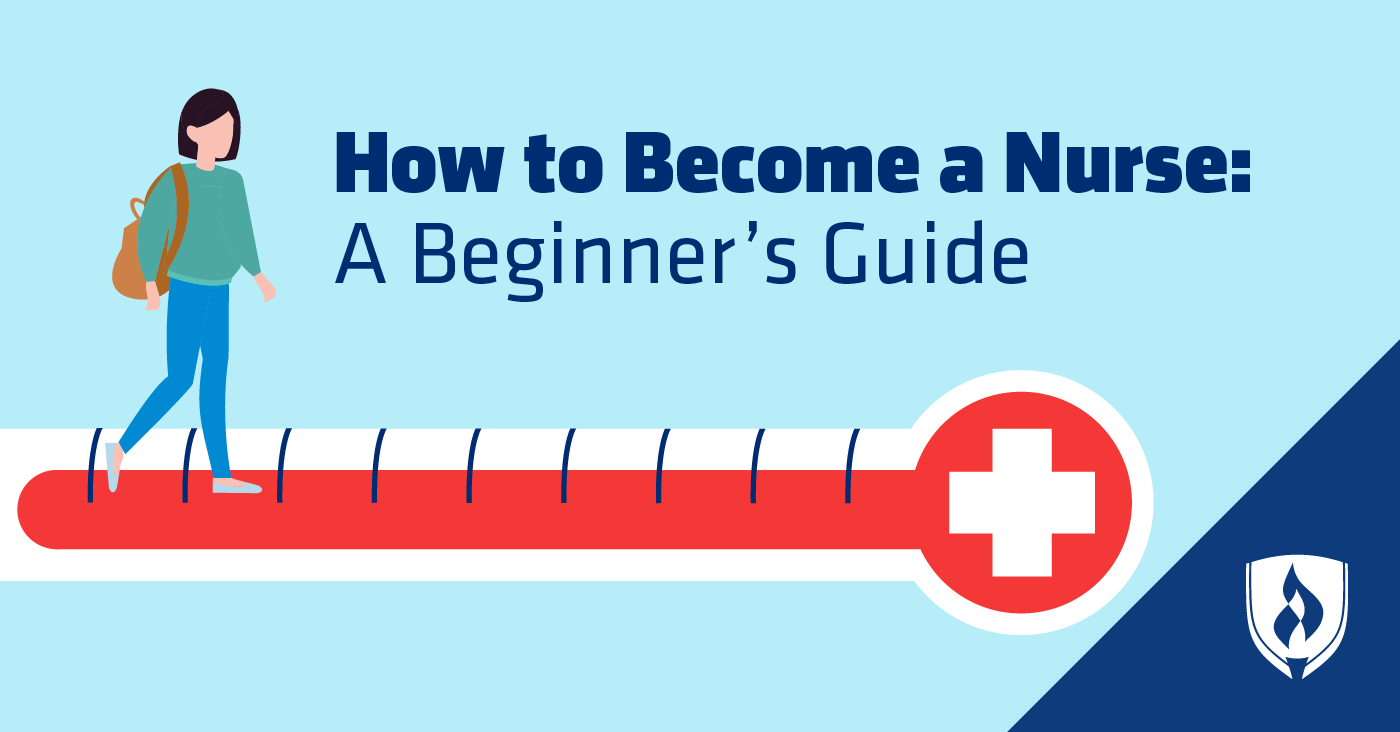
Maybe you’re a natural helper who is energized by assisting others. Maybe you come from a long line of nurses. Or maybe you’re drawn to a stable healthcare career that can be launched in relatively short order.
No matter what’s piqued your interest in a nursing career, you likely have some questions. At the top of that list is how to become a nurse.
While you’ve probably got a very high-level understanding of what it takes—go to school, graduate, get a job—there’s a little more that you’ll want to understand before charging ahead. Join us as we walk you through the steps you’ll need to take to become a nurse and help you avoid any pitfalls along the way.
Get Your Nursing School Questions Answered at a Nursing Information Session
How to become a nurse: choosing your path
One important factor to remember is that nursing has different levels of credentials within the field. These different credentials come with varying educational requirements and work responsibilities.
Licensed Practical Nurses (LPNs) have the shortest educational path and often work with elderly patients in settings like nursing homes and assisted-living facilities.
Registered Nurses (RNs) are the healthcare pros most people think about when they hear the term “nurse.” They’re often the folks you see working in hospitals, doctors’ offices and specialized clinics. There are two paths to becoming an RN—earning an Associate’s Degree in Nursing (ADN) or a Bachelor of Science in Nursing (BSN). Learn more about the pros and cons of an RN to BSN online program.
Advanced Practice Registered Nurses (APRNs) are highly trained specialized nurses. For example, nurse anesthetists, nurse midwives and nurse practitioners. These nursing roles require at least a BSN plus additional graduate nursing education.
Your educational path is a substantial decision, so take some time to research the levels of nursing credentials before getting started. The good news is that nursing education “ladders” well into other paths—for example, nurses who start on an LPN path can always continue to pursue higher credentials later on.
How to become a nurse: breaking down the steps
Despite the multiple educational paths into nursing, there are still universal steps you’ll need to take on your way to becoming a nurse.
Step one: Research programs and apply
This is a substantial step that can take some time. Your first order of business is to jot down the potential factors influencing your choice. Some areas you may want to consider:
Entrance requirements: These will vary by program so be sure to ask first. No matter the program, at the very least you’ll need a high school diploma or equivalent credential. Additionally, programs may require you to meet minimum GPA requirements in general education courses, pass a criminal background check, achieve a minimum score in standardized tests and complete an interview.
Class schedule and program length: You may want to consider the following: Are classes held in person? Online? If courses are delivered online, are there still in-person requirements? How long does it generally take to complete this program?
Start dates: Even if you’re in a hurry to get started, remember that some nursing programs may have a wait list or offer limited start dates.
Step two: Complete entrance requirements and enroll in nursing school
Once you’ve selected a program that fits your needs, you’ll have a clear picture of exactly what you’ll need to get started in your nursing coursework. One common entrance requirement nurses face is the Test of Essential Academic Skills (TEAS) exam. This test (along with other similar entrance exams) covers key academic subjects like reading, mathematics and science.
If the prospect of taking a standardized test has you a little nervous, don’t sweat it! Prepare yourself by checking out our article “Don’t Fear the TEAS Test: 5 Common Questions Answered.”
Step three: Complete your nursing coursework
While this step is certainly easier said than done, it’s obviously unavoidable if you want to work as a nurse. This is an important phase—you’ll learn the keys to direct patient care, the systems that govern the body and how to effectively work as a part of a healthcare team.
One aspect that makes nursing school unique compared to areas of study like business is that you have the chance to really spend time walking in the shoes of the professionals you aspire to be via clinical rotations. During this portion of your nursing training, you’ll be under direct supervision and have the opportunity to apply what you’ve learned in real healthcare settings. You can absorb a lot from studying and exams, but there’s no better way to learn the ropes than to do it yourself.
Looking for ways to keep calm during this busy stretch? Check out “7 Expert Tips to Survive Stress and Get Through Nursing School.”
Step four: Obtain state licensure
Completing nursing school is a huge step worthy of celebration, but before you can begin working as a nurse, you’ll need to receive appropriate licensure from the state you’d like to practice in. Your first step will be to research what requirements your state’s board of nursing (or other licensing body) has for obtaining a license—most are fairly similar but you don’t want to be caught off guard.
No matter the state you’d like to work in, you will need to pass a standardized test to obtain licensure—the National Council Licensure Examination (NCLEX). The NCLEX comes in two formats, the NCLEX-RN for prospective registered nurses and the NCLEX-PN for prospective practical nurses. These multiple-choice tests are designed to confirm your nursing skills and ability to think critically in complex healthcare situations.
While this step is completed after finishing nursing school, you’ll want to get started in your preparation early. Get some expert advice in our article “Nurses Share 8 NCLEX Tips that Helped Them Excel on Exam Day.”
Step five: Begin your nursing job search
Once you’ve passed the NCLEX examination, your final step is something that most should be familiar with—a good old-fashioned job search. Now’s the time to get your nursing resume up to par and polish your interview skills. It can help to lean a little on the connections you’ve made throughout nursing school—if you’ve built strong relationships during your clinical rotations, they can be a source of great references or even a heads-up on potential job openings. Not sure what type of job you're looking for? Check out clinic vs. hospital nursing.
Looking for more ways to make a positive impression on potential employers? Find some ideas in our article “8 Nursing Volunteer Opportunities to Help Bulk Up Your Resume.”
Are you ready to take the steps toward becoming a nurse?
As you can see, a fulfilling career in healthcare can’t be built overnight. There are some important steps and training to undergo in order to become a nurse – regardless of which type of nurse you hope to become. But it will all be worth it to build a rewarding career helping others.
Now that you’re more familiar with how to become a nurse, you should feel confident about the road ahead. If you’re ready to take your first step, check out the Rasmussen University School of Nursing programs and begin researching your options.
Related Articles:




